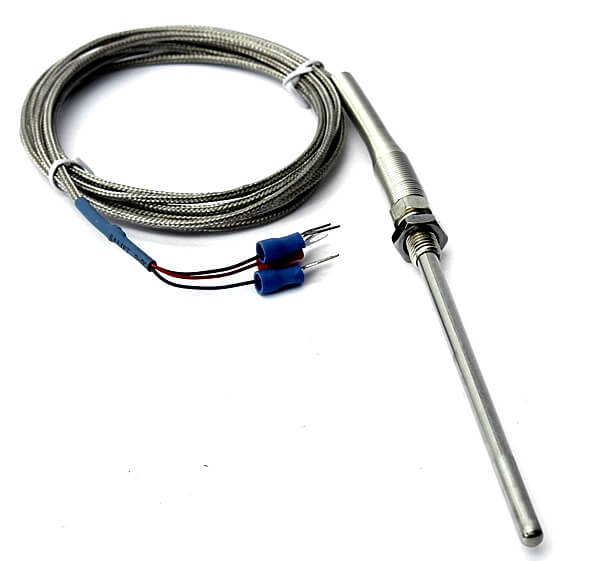What is RTD sensitivity?
What is RTD sensitivity? RTD (Platinum Resistance Thermometer) is a temperature sensitive resistor. Therefore, a sign of its “sensitivity” should indicate the degree of change in resistance due to temperature changes. Some RTD sensitivity topics only use the alpha element value to indicate the RTD element sensitivity, and this can be misleading because it does not directly indicate the degree of resistance change at 1 degree.
But if we look at how alpha is calculated, α = [(R100 ° C – R0 ° C) / R0 ° C] / 100 ° C, we see that alpha really represents an increase in the resistance fraction of more than 100 degrees Celsius. Alternatively, for α = 0.00385, the resistance 38.5 from increases from 0-100 ° C, or 0.385 for each ° C. Therefore, we can use 0.385 ٪ / ° C to indicate the sensitivity of our sensor, or we can convert it to native units of measurement and use Ω / ° C instead.
Simply put, the sensitivity of a resistance thermometer can be calculated by multiplying the RTD resistance at the reference temperature R0 (ie its calibration temperature) by the resistance temperature coefficient (TCR or alpha value) as follows: Sensitivity = KRTD = R0 * α. For RTD 100Ω Platinum with α = 0.00385 Ω / Ω / ° C and R0 = 100Ω, the sensitivity coefficient is calculated by expressing 100Ω * 0.000385Ω / Ω / ° C = 0.385Ω / ° C.
Thus, a 100Ω sensor at 0 ° C increases its resistance by 0.385Ω at 1 ° C or 0.385Ω / ° C. Referring to the previous table, we see that the higher the alpha value, the more sensitive the sensor. Therefore, a nickel RTD (α = 0.00672Ω / Ω / ° C, R0 = 120Ω) is more sensitive to temperature change than the RTD (Platinum Resistance Thermometer) of Platinum, because its resistance is 120Ω * 0.00672Ω / Ω / (C = 0.8064Ω changes / degree Celsius, greater than 0.385Ω / ° C of the Pt sensor, making it more than twice as sensitive.
Several times the nominal resistance R0 = 100Ω is sometimes used to produce more sensitive sensors. For example, an RTD 500Ω Pt (Pt500) would be 5 times more sensitive (RTD 100Ω Pt (Pt100). Likewise, an RTD 1000Ω Pt Pt1000 would be ten times more sensitive than an RTD 100Ω Pt. Their resistance variations are as follows. :
0.385Ω /°C for Pt100
1.925Ω /°C for Pt500
3.850Ω /°C for Pt1000
In summary, the sensitivity of the RTD sensor refers to its change in resistance at any degree of temperature change. This is both a function of the base strength and its coefficient of resistance (TCR). A higher-sensitivity sensor is not necessarily more accurate, but the larger signal it produces is less sensitive to the effects of lead wire and electrical noise, as it generally increases the signal-to-noise ratio of the sensor interface. The higher resistance also produces the same output voltage with a lower excitation current, which, by allowing lower currents to excite it, can reduce the self-heating effects on the sensor element by reducing the sensor elements.
Rose Calibration Company in Melbourne, Australia with over ten years of experience provides all calibration, maintenance, and repair services throughout Australia. If you live in Sydney, Melbourne, Adelaide, Perth, Geelong, and Brisbane, you can receive your quote in less than two hours by fill-up the form via the “Booking” link.
